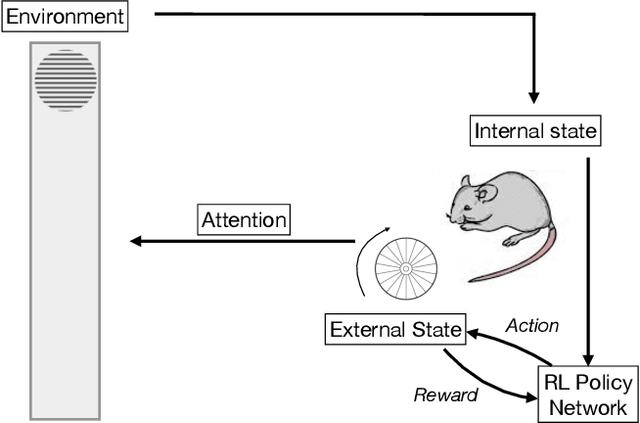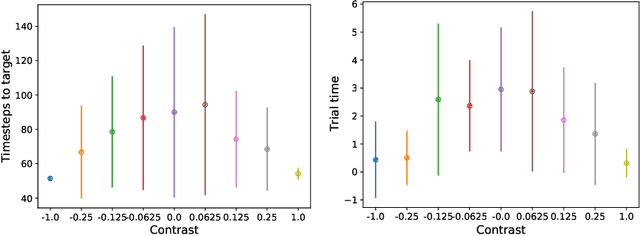Peter Latham
Encoding priors in the brain: a reinforcement learning model for mouse decision making
Dec 21, 2021



Abstract:In two-alternative forced choice tasks, prior knowledge can improve performance, especially when operating near the psychophysical threshold. For instance, if subjects know that one choice is much more likely than the other, they can make that choice when evidence is weak. A common hypothesis for these kinds of tasks is that the prior is stored in neural activity. Here we propose a different hypothesis: the prior is stored in synaptic strengths. We study the International Brain Laboratory task, in which a grating appears on either the right or left side of a screen, and a mouse has to move a wheel to bring the grating to the center. The grating is often low in contrast which makes the task relatively difficult, and the prior probability that the grating appears on the right is either 80% or 20%, in (unsignaled) blocks of about 50 trials. We model this as a reinforcement learning task, using a feedforward neural network to map states to actions, and adjust the weights of the network to maximize reward, learning via policy gradient. Our model uses an internal state that stores an estimate of the grating and confidence, and follows Bayesian updates, and can switch between engaged and disengaged states to mimic animal behavior. This model reproduces the main experimental finding - that the psychometric curve with respect to contrast shifts after a block switch in about 10 trials. Also, as seen in the experiments, in our model the difference in neuronal activity in the right and left blocks is small - it is virtually impossible to decode block structure from activity on single trials if noise is about 2%. The hypothesis that priors are stored in weights is difficult to test, but the technology to do so should be available in the not so distant future.
 Add to Chrome
Add to Chrome Add to Firefox
Add to Firefox Add to Edge
Add to Edge